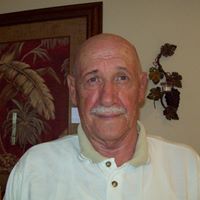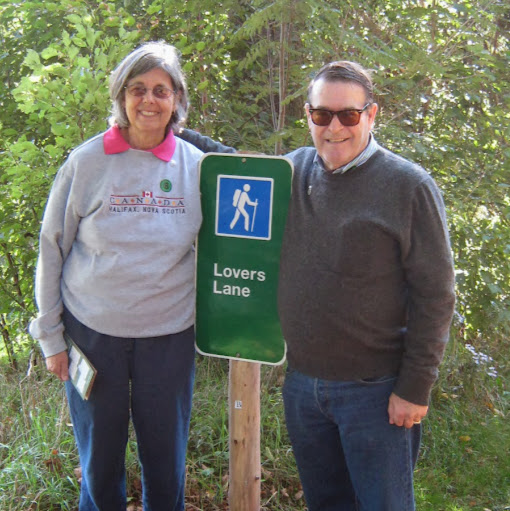Robert Louis Breeden
age ~83
from Port Charlotte, FL
- Also known as:
-
- Robert Loui Breeden
- Robert L Breeden
- Robert L Breedon
- Rob Breeden
- Bob Breeden
- Phone and address:
-
6964 David Blvd, Port Charlotte, FL 33981
(941)6976990
Robert Breeden Phones & Addresses
- 6964 David Blvd, Pt Charlotte, FL 33981 • (941)6976990 • (941)6978768
- Port Charlotte, FL
- Azle, TX
- Indianapolis, IN
- Punta Gorda, FL
- Boynton Beach, FL
- Fort Lauderdale, FL
- Colleyville, TX
- Boca Raton, FL
Specialities
Property Management
Us Patents
-
Method And Apparatus For Operating A Thermostat To Provide An Automatic Changeover
view source -
US Patent:6681848, Jan 27, 2004
-
Filed:Sep 21, 2001
-
Appl. No.:09/960128
-
Inventors:Robert Louis Breeden - Azle TX 76020
-
International Classification:F24F 1100
-
US Classification:165238, 165254
-
Abstract:A method and apparatus defines ( ) a time period Ps following a completion of a demand for one of heating and cooling, the time period sufficient to allow a sensed room temperature Tr measured ( ) by a thermostat ( ) to stabilize after the completion of the demand; and records ( ) an evaluation temperature Te equal to the sensed room temperature measured at an end of the time period. The method and apparatus determines ( ), at a future time after recording the evaluation temperature, whether to allow an automatic changeover between heating and cooling modes, based upon a comparison of the evaluation temperature and the sensed room temperature measured at the future time.
-
Thermostat And Method For Adaptively Providing A Changeover Between Heat And Cool
view source -
US Patent:20050189429, Sep 1, 2005
-
Filed:Feb 28, 2004
-
Appl. No.:10/788691
-
Inventors:Robert Breeden - Port Charlotte FL, US
-
International Classification:F23N005/20
G05D023/00 -
US Classification:23604600R
-
Abstract:A thermostat () operates continuously in a current mode () that is one of a heating mode and a cooling mode, and completes () a demand for one of heating and cooling in accordance with the current mode. After completing the demand and until another demand occurs for one of heating and cooling, the thermostat repeatedly makes () measurements of a sensed room temperature, and determines (), from the measurements, whether the sensed room temperature has finished a post-demand overshoot. In response to determining that the sensed room temperature has finished the post-demand overshoot, the thermostat records () an evaluation temperature, and decides whether to make an automatic changeover from the current mode to a new mode by periodically comparing () the sensed room temperature with the evaluation temperature.
-
Method And Apparatus In A Wireless Communication System For Creating A Learning Function
view source -
US Patent:62632094, Jul 17, 2001
-
Filed:Jul 28, 1999
-
Appl. No.:9/362544
-
Inventors:John Douglas Reed - Arlington TX
Robert Louis Breeden - Azle TX
Dwight Randall Smith - Grapevine TX
Thomas Casey Hill - Trophy Club TX
Slim Souissi - Fort Worth TX
Carl Bernard Olson - San Carlos CA -
Assignee:Motorola, Inc. - Schaumburg IL
-
International Classification:H04Q 720
-
US Classification:455456
-
Abstract:A wireless communication system conducts (402) communications between a fixed portion (102) of the wireless communication system and a portable subscriber unit (122) carried by a user; and records (404) a relevant aspect of the communications, thereby producing recorded information. The system determines (405) a current time of day and a current position of the user and makes (406) a comparison of the recorded information with the current time of day and the current position of the user to determine whether an alert is necessary, and generates (412) the alert when the comparison determines the alert is necessary.
-
Method And Apparatus For Controlling Scanning Of A Subscriber Unit
view source -
US Patent:61672688, Dec 26, 2000
-
Filed:Feb 16, 1999
-
Appl. No.:9/246996
-
Inventors:Slim Souissi - Fort Worth TX
Jheroen Pieter Dorenbosch - Paradise TX
Robert Louis Breeden - Azle TX -
Assignee:Motorola, Inc. - Schaumburg IL
-
International Classification:H04Q 720
-
US Classification:455434
-
Abstract:A location is determined (402) at which a subscriber unit (122, 300) communicating with a first wireless system is positioned. A distance between the location and a second wireless system preferred by the subscriber unit is calculated (404), and, based upon the distance, it is decided (408) whether the subscriber unit will scan for a signal from the second wireless system.
-
Sending Different Identifiers To Selected Receivers, To Represent The Same Source
view source -
US Patent:50669494, Nov 19, 1991
-
Filed:Nov 8, 1989
-
Appl. No.:7/433242
-
Inventors:Robert L. Breeden - Boynton Beach FL
Richard E. Johnson - Boynton Beach FL
Amy R. Kabcenell - Highland Beach FL
Thomas F. Holmes - Boynton Beach FL -
Assignee:Motorola, Inc. - Schaumburg IL
-
International Classification:G08B 522
H04Q 130
H04M 1100 -
US Classification:34082544
-
Abstract:A method for generating alphanumeric messages in a telephone-entry selective call system comprises programmable selective call source identification for selected selective call receivers and numerically coded canned alphanumeric messages.
-
Paging By Text Matching
view source -
US Patent:49623770, Oct 9, 1990
-
Filed:Feb 9, 1989
-
Appl. No.:7/308281
-
Inventors:Craig S. Wallace - Boynton Beach FL
Robert L. Breeden - Boynton Beach FL -
Assignee:Motorola, Inc. - Schaumburg IL
-
International Classification:H04B 100
-
US Classification:340825440
-
Abstract:A selective call system is provided in which string searching or text matching operations are performed on data from data generating devices such as condition sensors in a security system. When a predetermined string is identified, an address of a selective call receiver such as a pager is generated and that receiver is called. The invention is applicable to other applications where data is generated which includes predetermined character strings.
-
Central Controller With Adaptive Message Handling Characteristics
view source -
US Patent:50724444, Dec 10, 1991
-
Filed:Oct 23, 1989
-
Appl. No.:7/425889
-
Inventors:Robert L. Breeden - Boynton Beach FL
-
Assignee:Motorola, Inc. - Schaumburg IL
-
International Classification:H04J 324
G08B 522 -
US Classification:370 941
-
Abstract:A central controller operating as a pager terminal for receiving, handling, and transmitting messages is shown that adaptively alters its message handling characteristics in order to improve the overall throughput of the central controller. The channel loading characteristics, based upon the time of day, are used in order to vary the limitation of the size of message received by the central controller as well as vary the transmission size and age of messages prior to transmission. Additionally, channel loading may be determined by determining the total size of messages within the central controller. In response to the total size determination, the limitation of the message size received by the controller may be varied. Furthermore, the transmission size and age of messages prior to transmission may be varied in response to the total size determination. The central controller may also adopt these operations in response to the combination of the total size determination and channel loading based upon the time of day characteristics.
-
Simulcast Transmitter Apparatus Having Automatic Synchronization Capability
view source -
US Patent:46960520, Sep 22, 1987
-
Filed:Dec 31, 1985
-
Appl. No.:6/815432
-
Inventors:Robert L. Breeden - Boynton Beach FL
-
Assignee:Motorola Inc. - Schaumburg IL
-
International Classification:H04B 100
H04B 700 -
US Classification:455 51
-
Abstract:A simulcast transmitter apparatus having automatic synchronization capability is disclosed which utilizes a signal readily available from any one of a number of available master timing sources to maintain a constant, uniform time delay to the transmitter via its interconnect link, even though the time delay corresponding to this interconnect link is susceptible to variation. Each interconnect link may consist of a phone line or other radio link which exhibits a relatively fixed, but unstable, delay. Each base station includes at least a transmitter and an adaptive-delay device which operates as a remotely-adjustable delay network upon receipt of a resync signal from a central controller to readjust and automatically maintain a uniform amount of time delay to each transmitter in the base stations. A master timing signal receiver, such as a suitable radio navigation receiver, is coupled to a suitable fixed delay network and provides the reference sync signal for each remotely-sited base station throughout the designated geographical area. This transmitter is therefore able to be compensated for varying amounts of delay caused by utilizing alternate links which may be necessary to maintain system reliability while overcoming inclement weather, interference, or other equipment difficulties.
Name / Title
Company / Classification
Phones & Addresses
Director
for The Young-Uns
KMB PUBLISHERS, INC
President, Director
Design Construction Group, Inc
1600 S Federal Hwy, Pompano Beach, FL 33062
1620 S Federal Hwy, Pompano Beach, FL 33062
1620 S Federal Hwy, Pompano Beach, FL 33062
Manager
Btg Consulting LLC
Isbn (Books And Publications)


License Records
Robert D. Breeden Jr.
License #:
PST.019545 - Expired
Issued Date:
Aug 18, 2011
Expiration Date:
Dec 31, 2014
Type:
Pharmacist
Robert Dewey Breeden Rp
License #:
13605 - Expired
Category:
Pharmacy
Issued Date:
Apr 21, 2011
Effective Date:
Jan 1, 2016
Expiration Date:
Jan 1, 2016
Type:
Pharmacist
Resumes

Robert Breeden
view source
Robert Breeden
view source
Robert Breeden
view source
Robert Breeden
view source
Robert Breeden
view source
Robert Breeden
view source
Robert Rob Breeden
view source
Robert Breeden
view sourceLocation:
United States

Robert Breeden
view source
Robert Breeden
view source
Robert Breeden
view source
Robert Breeden
view source
Robert Breeden
view source
Danny Robert Breeden
view source
Robert L Breeden
view source
Robert Breeden
view sourcePlaxo

Robert Breeden
view sourcePhiladelphia
Classmates

Robert Breeden
view sourceSchools:
Lingle - Ft. Laramie High School Lingle WY 1993-1997
Community:
Yvonne Morris, Dan Unverzagt, Roy Trowbridge, Carter Naylor

Robert Breeden
view sourceSchools:
Miramar Elementary School Miramar FL 1967-1971, Pines Middle School Pembroke Pines FL 1972-1973
Community:
Jane Latham, Lori Bush, Al Scavone

Robert Breeden
view sourceSchools:
Davis Hills Middle School Huntsville AL 1981-1983
Community:
Rocky Medina, Tania Hillard, Thom Porter

Robert Breeden
view sourceSchools:
Shepherdstown High School Shepherdstown WV 1964-1968
Community:
Joe Richardson, Margie Bean, Stephen Holmes, Sarah Heinz, Dan Tabler, Sally Staggers, Rick Boor, Nancy Burnett, Linda Bradford

Atoka High School, Atoka,...
view sourceGraduates:
Bobbie Breeden (1971-1975)

Davis Hills Middle School...
view sourceGraduates:
Robert Breeden (1981-1983),
Gail Asarisi (1968-1969),
Wesley Hyde (1978-1982),
Patrick Dillard (1993-1997),
Jennifer Platts (1969-1973)
Gail Asarisi (1968-1969),
Wesley Hyde (1978-1982),
Patrick Dillard (1993-1997),
Jennifer Platts (1969-1973)

Shepherdstown High School...
view sourceGraduates:
Michael Bean (1964-1968),
Stephanie Diamond (1970-1974),
Robert Breeden (1964-1968),
Christina Keyser (1981-1985),
James Prather (1965-1969)
Stephanie Diamond (1970-1974),
Robert Breeden (1964-1968),
Christina Keyser (1981-1985),
James Prather (1965-1969)

Miramar Elementary School...
view sourceGraduates:
Robert Breeden (1967-1971),
Rushane Anderson (1997-2001),
Daneil Robb (2001-2005),
Haile Williams (1993-1997),
Angella Byfield (1996-2000)
Rushane Anderson (1997-2001),
Daneil Robb (2001-2005),
Haile Williams (1993-1997),
Angella Byfield (1996-2000)
Flickr
Googleplus

Robert Breeden

Robert Breeden

Robert Breeden

Robert Breeden

Robert Breeden

Robert Breeden
Youtube
Myspace
Get Report for Robert Louis Breeden from Port Charlotte, FL, age ~83


















